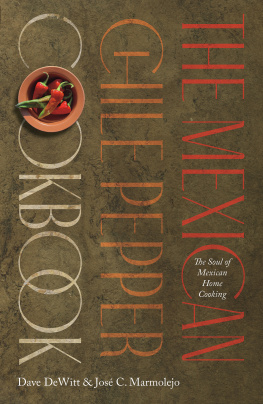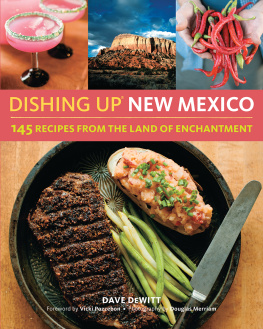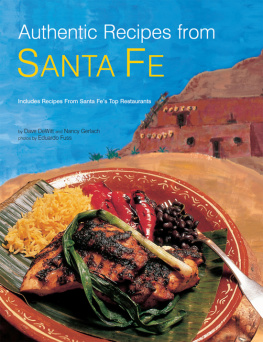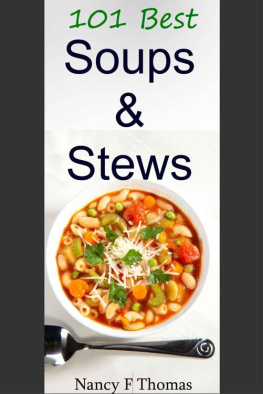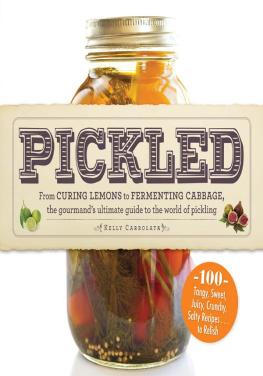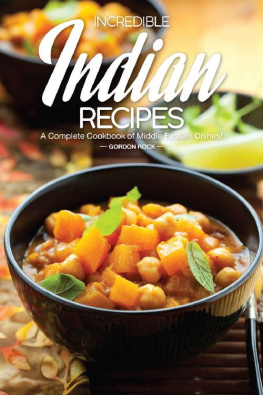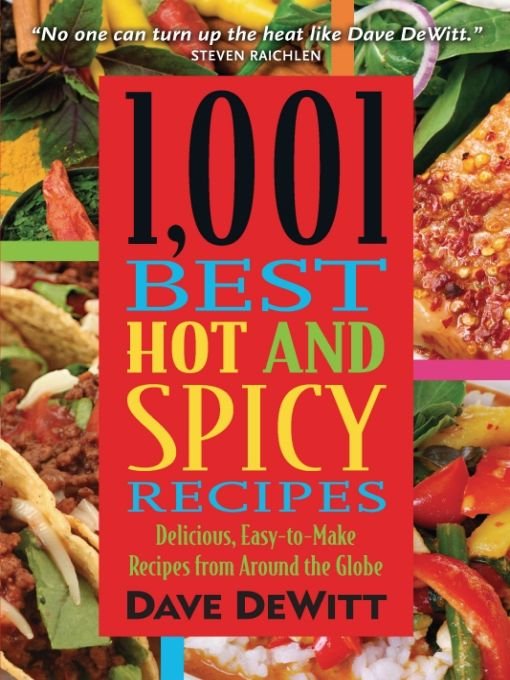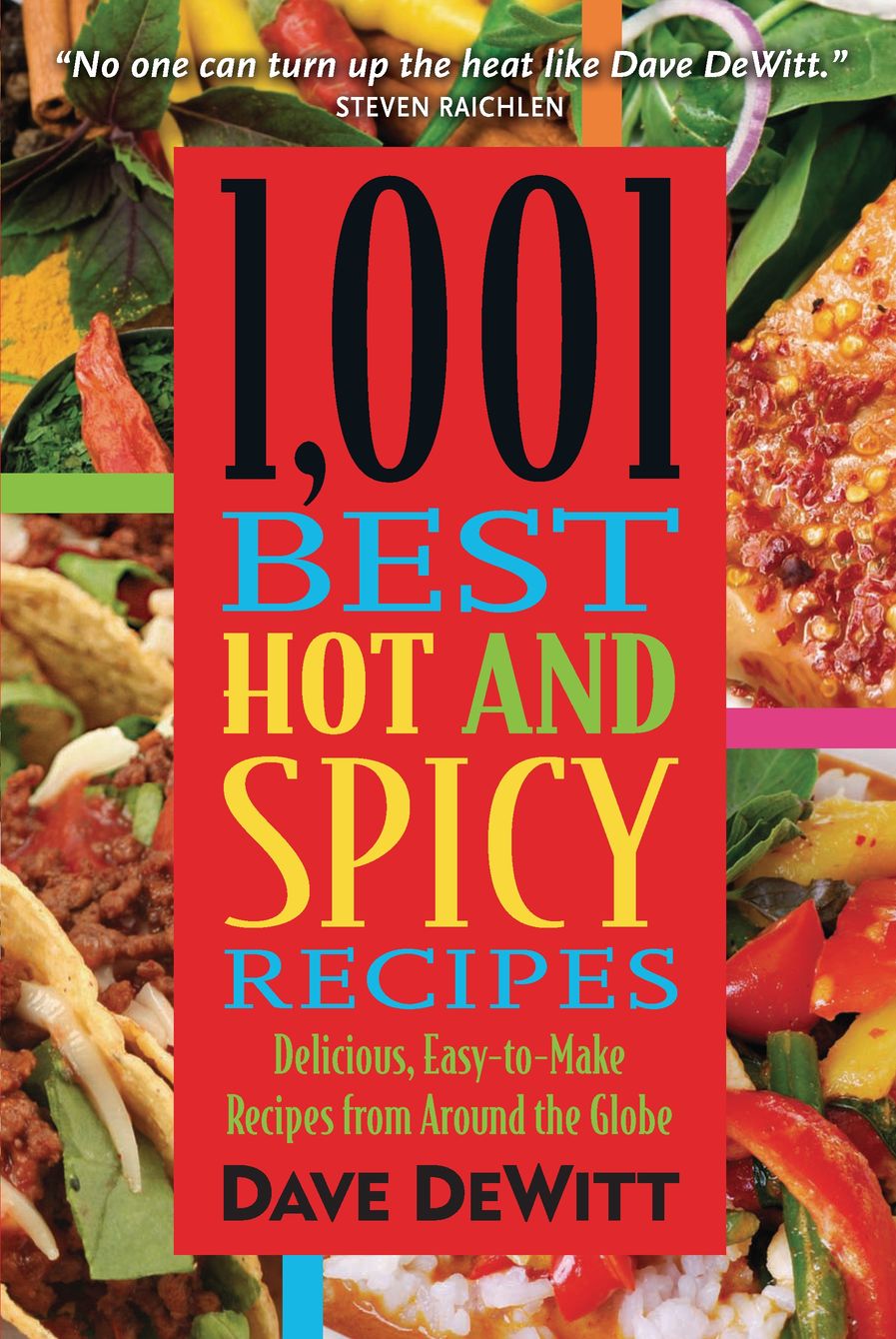Table of Contents
Selected Books by Dave DeWitt
The Fiery Cuisines (1984), with Nancy Gerlach
The Whole Chile Pepper Book (1990), with Nancy Gerlach
The Pepper Garden (1993), with Paul W. Bosland
A World of Curries (1994), with Arthur Pais
The Habanero Cookbook (1995), with Nancy Gerlach
The Hot Sauce Bible (1996), with Chuck Evans
Hot & Spicy Caribbean (1996), with Mary Jane Wilan and Melissa T. Stock
Great Bowls of Fire (1997), with W. C. Longacre
The Chile Pepper Encyclopedia (1999)
Barbecue Inferno (2001), with Nancy Gerlach
The Spicy Food Lovers Bible (2005), with Nancy Gerlach
Da Vincis Kitchen (2006)
Cuisines of the Southwest (2007)
The Complete Chile Pepper Book (2009), with Paul W. Bosland
Thomas Jefferson and the Founding Foodies (2010)
DEDICATION
This book is for all the chileheads who have supported and encouraged me all these years by buying my books, reading and subscribing to the magazines Ive edited, visiting the SuperSite, coming to the Fiery Foods & Barbecue Show, and sharing their houses and kitchens when Mary Jane and I visit.
ACKNOWLEDGMENTS
Thanks to the cooks who contributed recipes to this collection: Peter Aiken, Michael Baim, Peggy Barnes, Chel Beeson, Deborah Berlin, Lula Bertrn, Thomas Brown, Ellen Burr, Cindy Castillo, Pat Chapman, Michelle Cox, Suzy Dayton, Jeanette DeAnda, Jasmine DeLuisa, Alois Dogue, Rebecca Chastenet de Gry, Jeff Corydon, Robert Dixon, Binh Duong, Rudolfo de Garay, Tim Fex, Stella Fong, Winifred Galarza, Kathy Gallantine, Linda Gant, Nancy and Jeff Gerlach, Janet Go, John Gray, Jeff Gustie, Antonio Heras-Duran, Sharon Hudgins, Shirley Jordan, David Karp, Mary Kinnunen, Judy Knapp, Arnold Krochmal, W. C. Longacre, Leyla Loued-Khenissime, Tita Libin, Donald and Sue Louie, Linda Lynton, Daryl Malloy, Neil and Sandy Mann, Andr Niederhauser, Rosemary Ann Ogilvie, Jim Peyton, Rosa Rajkovic, Judith Ritter, Loretta Salazar, Todd Sanson, Chris Schlesinger, Devagi Shanmugan, Bud Spillar, Richard Sterling, Mike Stines, Melissa T. Stock, Foo Swasdee, David Tucker, Mary Jane Wilan, Charles Wiley, Martin Yan, and Gloria Zimmerman.
PREFACE
The Pods That Devoured Me
For the past three decades, my life and career have been consumed by chile peppers and fiery foods. Thats why Im called The Pope of Peppers in the media. Ive edited two magazines on the subject, Chile Pepper from 1987 to 1996 and Fiery Foods & BBQ from 1997 to 2008. I publish the huge Fiery Foods & Barbecue SuperSite (www.fiery-foods.com), which includes hundreds of articles and thousands of recipes that has been online since 1996. With various coauthorsespecially Nancy Gerlach and my wife, Mary Jane WilanI have written more than thirty books featuring chile peppers, on subjects ranging from gardening, to health aspects, to food history, to cooking. This is number thirty-seven.
This book is composed of the best dishes from my collection of chile pepper-laden recipes from around the world that I collected on site, from freelance contributors to the magazines and the SuperSite, from coauthors, and by researching the authentic, obscure, and out-of-print cookbooks from all over the world that I collected for my library. That library now resides in Special Collections at the New Mexico State University Library, in an archive that I endowed, along with my chile pepper-related papers, clippings, manuscripts, photographs, and digital material.
In some chapters in this book, the recipes are grouped by type of dish; in the others, they are organized to reflect the order of chile peppers spread around the globe: South and Central America, Mexico, the Caribbean, the United States, Europe, the Mediterranean and Middle East, Africa, the Indian Subcontinent, and Asia and the Pacific. There is little doubt that this book is the largest and most comprehensive cookbook ever published on this subject. I certainly hope it heats up your life!
INTRODUCTION
Chile Peppers, Commercial Products, and Substitutions
There are literally thousands of varieties of chile peppers grown around the world, but only a few dozen are commonly used for cooking, and all those used in the recipes in this book have substitutions. The heat of any chile depends on two factors: its genetic makeup and the environment in which its grownthe soil, the nutrients applied to the plant, the weather, and the amount of water. I believe that both factors contribute equally to the heat level. Often, chiles that are stressed from a lack of water or extreme environmental temperatures have a higher heat level than they otherwise would.
Generally speaking, the smaller the pod, the hotter the chile. The one exception is the habanero, which is larger and hotter than the smaller hot chiles called bird peppersthe piquins, chiltepins, and the smaller Asian and African varieties.
Fresh Pods
Available from the garden or the market, fresh peppers are increasing in popularity as they become more commonly available. The most ubiquitous peppers are, of course, the familiar bells, which have no heat unless they are a variety called Mexi-Bell, which has a mild bite. The poblano, similar in size to a bell, is a Mexican pepper with moderate to mild heat which is often stuffed with cheese and baked.
The most readily available hot peppers in the produce sections of supermarkets these days are jalapeos, serranos, habaneros, and yellow wax peppers. Jalapeos and serranoseither green or fresh redhave similar uses. They are often floated whole in soups or stews to provide a little extra bite and removed before serving. The serranossmaller, thinner, and hotter than jalapeosare the classic chiles of the Mexican pico de gallo fresh salsas. Habaneros (they are not spelled habaero) and their relatives in the same species are the worlds hottest peppers, lantern-shaped orange or red devils that have a unique, fruity aroma in addition to their powerful punch. Use them with caution. Generally speaking, any of the small fresh peppers may be substituted for one another; however, they are not an acceptable substitute for poblanos or New Mexican varieties. The yellow wax peppers are usually mild and are often stuffed or chopped for use in salsas and salads.
Several varieties of the long, green New Mexican chiles are available fresh in the Southwest and occasionally in other locations. The NuMex 6-4 variety is the most common and is available from August through early November. Its hotter cousin, Sandia, is usually not seen in the green, or immature, form. The mildest New Mexican variety is the Anaheim, a California variety that is available most of the year. Occasionally, New Mexican chiles are identified by their original grower (such as Barker) or by a regional appellation (Chimayo, Hatch, or Luna County), which further confuses the issue. I should point out that Hatch is not a chile variety, and not enough chiles are grown in the vicinity of that little town to supply all the roadside vendors that call their chiles by that name. The Hatch chile is a marketing myth, and vendors in that town regularly import them from other locations and call them Hatch.
All of the long green chiles must be roasted and peeled before they can be used in a recipe. Blistering or roasting the chile is the process of heating the chile over flames to the point that the tough, transparent skin separates from the meat of the chile so it can be removed. The method is quite simple. While working with the chiles, be sure to wear rubber or latex gloves to protect yourself from the capsaicin (the chemical that gives chiles their heat) that can burn your hands and any other part of your body that you touch. Before roasting, cut a small slit close to the stem in each chile so that the steam can escape. The chiles can then be placed on a baking sheet and put directly under the broiler or on a screen on the top of the stove.


